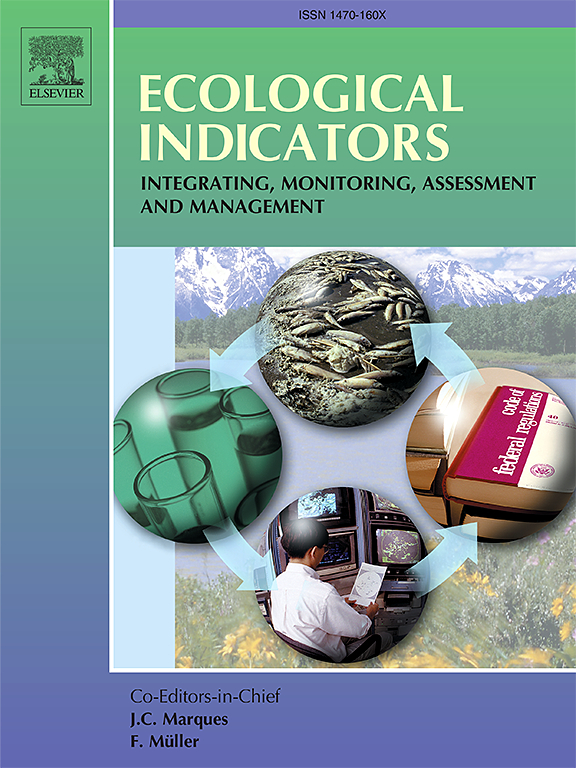Spatiotemporal variation and influencing factors of phosphorus in Asia’s longest river based on receptor model and machine learning
IF 7
2区 环境科学与生态学
Q1 ENVIRONMENTAL SCIENCES
引用次数: 0
Abstract
Phosphorus contamination in rivers has received widespread attention. However, in areas with extensive sources of phosphorus and complex hydrogeology conditions, it is difficult to accurately evaluate the main influencing factors of phosphorus. In present study, the spatiotemporal variations of phosphorus were analyzed at wet and dry seasons in the Yangtze River during 2020–2023. Phosphorus concentrations in the Yangtze River decreased by 9.15 % in four years, reaching a peak in summer. In addition, absolute principal component score‐multiple linear regression (APCS‐MLR) model was proved to be suitable for exploring the contribution of main phosphorus-influencing factors in Yangtze River. The contribution rate in wet season was ranked as point source pollution (40.13 %) > agricultural pollution (32.74 %) > organic pollutants (3.78 %), while the contribution rate in dry season was ranked as point source pollution (44.88 %) > organic pollutants (13.13 %) > seasonal factor (7.60 %). Machine learning models (e.g., RidgeCV, Random Forest, XGBoost) were used to establish a connection between total phosphorus concentrations and explanatory variables defining influencing factors, aiming to predict total phosphorus concentrations in the Yangtze River. The anthropogenic and natural variables, such as domestic sewage, GDP, agricultural area, livestock, rainfall, wind speed, temperature and population were selected as predictors. The Random Forest model performed well in predicting total phosphorus concentrations, with R2 value of 0.76. This study provides useful information for optimizing phosphorus pollution management and strategies for eutrophication control in the Yangtze River as well as in other large watersheds.

基于受体模型和机器学习的亚洲最长河流磷的时空变化及影响因素
本文章由计算机程序翻译,如有差异,请以英文原文为准。
求助全文
约1分钟内获得全文
求助全文
来源期刊

Ecological Indicators
环境科学-环境科学
CiteScore
11.80
自引率
8.70%
发文量
1163
审稿时长
78 days
期刊介绍:
The ultimate aim of Ecological Indicators is to integrate the monitoring and assessment of ecological and environmental indicators with management practices. The journal provides a forum for the discussion of the applied scientific development and review of traditional indicator approaches as well as for theoretical, modelling and quantitative applications such as index development. Research into the following areas will be published.
• All aspects of ecological and environmental indicators and indices.
• New indicators, and new approaches and methods for indicator development, testing and use.
• Development and modelling of indices, e.g. application of indicator suites across multiple scales and resources.
• Analysis and research of resource, system- and scale-specific indicators.
• Methods for integration of social and other valuation metrics for the production of scientifically rigorous and politically-relevant assessments using indicator-based monitoring and assessment programs.
• How research indicators can be transformed into direct application for management purposes.
• Broader assessment objectives and methods, e.g. biodiversity, biological integrity, and sustainability, through the use of indicators.
• Resource-specific indicators such as landscape, agroecosystems, forests, wetlands, etc.
 求助内容:
求助内容: 应助结果提醒方式:
应助结果提醒方式:


